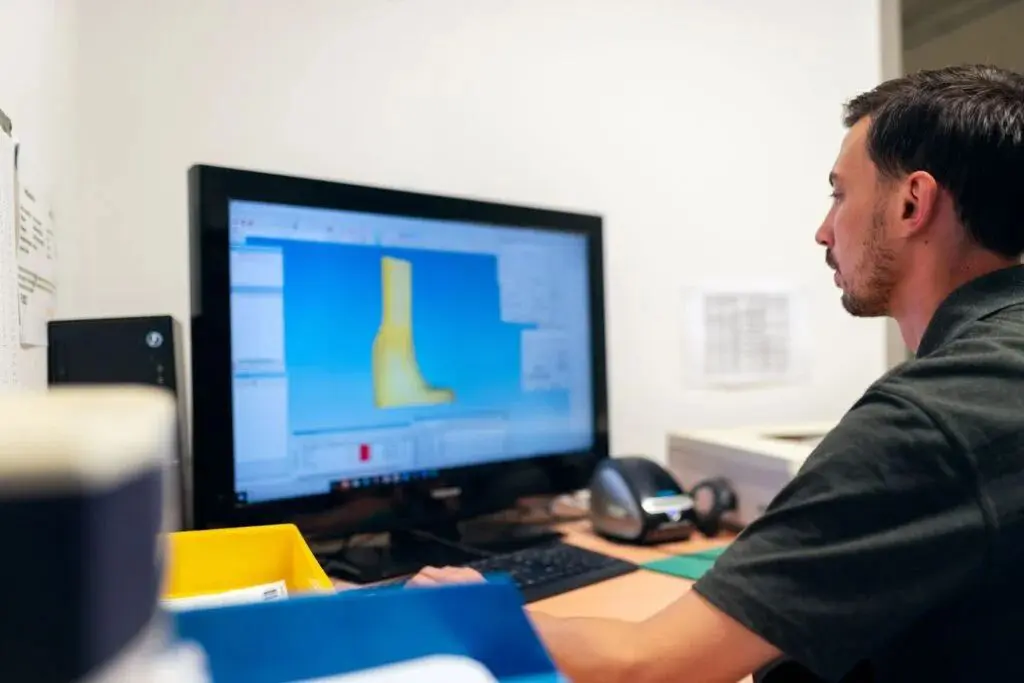Technology is the improvement of our methods and solutions to problems. It entails innovation and the creation of strategies for achieving a particular objective. It includes physical structures and digital systems that enhance our quality of life and the environment.
Tech startup founders frequently choose between a CTO and a VP of engineering. Who is the best candidate for my company? The choice can be problematic in the continuously evolving technology sector, where skilled workers are in high demand. The tech sector needs people who value being on the cutting edge of technology. The Chief Technology Officer and Vice President of Engineering are two crucial positions that meet the bill.
A vice president of engineering (VPE) and a chief technology officer (CTO) are two positions with similar responsibilities in the field of technology (VPE). A CTO is in charge of a company’s technical direction and vision, whereas a Vice Principal of Engineering concentrates on the firm’s technologically practical and operational aspects. Both positions require strong leadership, vision, and familiarity with the company’s fundamental ideals. In this article, we go into greater detail regarding these jobs and contrast a CTO with a VP of engineering.
Also Read About: Detailed Guide on Fractional CTO | All You Need to Know
What Does a CTO Do?
A CTO serves as a company’s technology visionary, offering helpful insights on how technology could benefit the business. This calls for a thorough awareness of the most recent advancements in particular technological fields that may enhance business operations. Their primary focus is researching and developing plans for integrating new technologies, including creating prototypes and concepts. CTOs frequently have a group of research engineers reporting to them. However, these groups typically have a small size.

A CTO oversees an organization’s technical direction and thought leadership. To implement patent strategies like filing patents and doing competitive analyses to ensure their innovations are original, they must manage and maintain a patent portfolio for the company. They must also collaborate with the vice president of engineering and their team. The VP of engineering frequently contributes to developing technology strategy, but the CTO typically serves as the brand’s spokesperson and participates in press conferences and media appearances.
Also Read About: Everything You Need to Know About Interim CTO
What is VP Engineering?
A VPE’s responsibility is to ensure the success of the engineering organization and all it entails. Leading the occasionally enormous teams of engineers and engineering managers to create and deliver high-quality software is one of the duties frequently assigned to the VPE. VPES should be excellent managers, strategic team builders (typically also strong recruiters), good communicators, and, yes, good engineers.

When creating a technical roadmap, VPEs translate the vision and business value.
They must strike a balance between:
- The ongoing conflict between quality and speed
- Working with their teams to streamline engineering procedures
- Guarantee that they function at their peak
- Remove any obstacles in their path
- Meet their objectives and kips
- Ultimately produces excellent software.
Also Read About: A Comprehensive Guide to Hiring an Outsourced CTO
Roles and Responsibilities of a VP Engineer
Depending on the company’s size, condition, and culture, the duties of a vice president of engineering would vary. Still, a typical to-do list would contain the following:
1- Bring Products To The Market
By collaborating with the product, design, business, sales, and marketing teams. This entails a lot of justification and promotion of engineering teams’ efforts. When done correctly, cross-functional teams will perform effectively, and engineering will have a voice in the organization.
2- Implement The CTO’s Technical Strategy
Engineering vice presidents may also be in charge of formulating the strategy for startups and small businesses. Here, teams accomplishing their strategic goals is a crucial indicator of success.
3- Controlling Direct Reports
Running 1:1s, finding new personnel, determining skill shortages, and giving engineering managers opportunities for advancement are all included. Employee advancement through the acquisition of new skills or promotions and maintaining strong staff retention rates are signs of successful vice presidents.
Also Read About: The Major Differences Between CDO VS CTO
4- Reporting The Status
Report the status of the engineering organization to the CTO, the board, and other stakeholders, highlighting achievements and pointing out areas in need of assistance, ideally supported by meaningful data.
5- Managing The Purchasing and Spending
Manage crucial purchasing and spending choices regarding critical tools and technologies, as well as the cash flow of the engineering business. The objective is to keep engineering expenses low and support the growth of the company’s earnings.
6- Create and Implement Structures
Create and implement structures for the engineering organization’s personnel, such as procedures for hiring and advancement.
7- Encourage Safety
Encourage psychological safety and inclusivity in all of their interactions and procedures to create an empowered engineering culture. Success in this area results in contented, psychologically secure workers who are free to be themselves at work and high application and retention rates.
Also Read About: The Key Differences Between CIO VS CTO
8- Oversee Reorganizations
Oversee any significant reorganizations and aid in integrating any mergers and acquisitions the company undergoes in times of organizational transition, VP engineering teams guide. This entails assisting direct reports, rethinking and putting in place new procedures, and making sure there is open, constructive communication regarding the adjustments.
Qualifications of a VP Engineer
Complete a bachelor’s degree program at an accredited college or institution. Due to the seniority of the VP engineering, most employers prefer candidates with at least a bachelor’s degree.
Although business administration or engineering are the two most popular majors for aspiring vice presidents of engineering, you can also select a related discipline like business or project management. Depending on the industry you want to work in, you might also choose to specialize in a particular area of engineerings throughout your undergraduate studies, such as industrial engineering, software engineering, or electrical engineering.
Consider applying to a master’s degree program at a higher level of collegiate education. Even though certain vice presidents of engineering may be able to get employment with only a bachelor’s degree, many employers prefer senior-level executives to have some advanced degree.
What are the major differences between VP engineering vs cto?
Please remember that the CTO and the VP engineering have crucial duties before we compare them. Additionally, each of these positions calls for technical leadership abilities. Let’s now contrast the roles, vision, and responsibilities of the CTO and the VP of engineering.
1- Structures For Teams
A vice president of engineering is in charge of a sizable staff of technical staff, engineers, and corporate leaders. They frequently keep an eye on project deadlines and ensure that goals are by the corporate vision. The devoted research engineers and engineering managers on the CTO’s considerably smaller staff oversee the company’s technological advancements.
The vice president of engineering must plan the annual budget for the engineering team at a corporation. This includes overhead expenses like new equipment or training and various employee incentives like bonuses. A CTO explains how a business may use new technologies to innovate operations and generate income.
Also Read About: Everything You Need To Know About The CTO Job Description
2- Various Specialties In Engineering Team
A vice president of engineering specializes in staff management and its procedures. Therefore, they frequently collaborate with people to enhance employees’ productivity. A CTO is much more concentrated on a company’s technical strategy, necessitating less staff engagement. CTOs still value leadership, but not on the same personal level as a VP of engineering.
3- Different Perspectives
A VP of engineering is more focused on the product vision, even though both positions require a thorough understanding of the company and its future. This is made possible by superb design, implementation, and workmanship. The CTO is in charge of a company’s technical vision and how technology can be used to enhance business processes. CTOs frequently concentrate on thought leadership for the business.
4- Different Duties
Engineering vice presidents are in charge of a staff that reports to them. Through recruitment campaigns, they put a lot of effort into forming teams and creating structures for internal employee development. Although CTOs are in charge of a team, they are more concerned with fostering a supportive technical culture at work and developing a company strategy.
5- Different Technical Strategy
Typically, a VP of engineering collaborates with staff and participates actively in the job. This calls for effective program management abilities and the capacity to delegate work easily. CTOs focus on developing top-down strategies and executing technical innovation to spur strategy development.

6- Differences In Collaboration
In the end, a vice president of engineering has an internal focus and collaborates with staff to implement and roll out corporate strategies. A CTO is less likely to collaborate with employees because they serve as a company’s technical leadership. It also means that their work is more directed toward the board of directors and to actual technical leadership initiatives.
Also Read About: Reasons Why You Should Hire a Part-Time CTO
Similarities between VP engineering vs CTO
Resource Administration
A VP Engineer and a CTO determine what kind of resources are needed for technical activities. They guarantee optimal planning and budget adherence. Determination of the best places to get the materials required as well is also done by them. And, both of them guarantee the efficient use of the resources and guard against their improper use.
Reporting
A VP Engineer and a CTO ensure that reports are properly prepared and distributed for planning and decision-making. They guarantee that stakeholders and other executives access pertinent data from their teams. To get trustworthy data, these people make sure to conduct enough investigation. For the benefit of other senior executives and stakeholders, a VP Engineer and a CTO also translate technical material. Finally, they update cutting-edge technical developments that could impact an organisation or the business climate.
Career Path
A VP Engineer and a CTO are skilled technicians who possess a range of scientific expertise. These people are proficient in engineering procedures. Additionally, they are experts in technical breakthroughs. It aids them in developing problem-solving abilities for the workplace and commercial setting.
Both of them either hold a bachelor’s or master’s degree in engineering, which offers them a sufficient scientific understanding of technical systems and structures.
Risk Management
A VP Engineer and a CTO are focused on locating and controlling risks associated with technical systems and structures. Both of them add security and safety precautions for current systems, both virtual and physical. They also offer technical assistance to employees who are using these platforms.
Program management
A VP Engineer and a CTO organize and plan the execution of engineering initiatives within the company. These people locate and obtain the resources required for these projects. Both of them ensure the teams have the necessary skills and training to complete the job. A VP Engineer and a CTO also ensure that the project blueprints are free of flaws that could cause delays or unneeded hazards.
Both of them are interested in discoveries and innovations that can boost an organization’s productivity and profitability. They identify theories and practices that improve the efficacy and efficiency of operations. A VP Engineer and a CTO propose novel ways to do daily tasks to increase individual and group productivity.
Should a company hire both a CTO and VP Engineer?
Having a CTO and VP of engineering can help a new company. You can’t hire professionals for both roles at the same time, though, because the stage a startup is in affects how it hires for each role.
Startups in their early stages need a CTO. The rationale is that they determine the actual technical requirements for the project. Additionally, they allocate finances and evaluate resource needs. The CTO’s knowledge of a programming language like JavaScript is advantageous for a software product.
The CTO’s expertise is vital because the development team is smaller, and the aim is more focused. Additionally, it is easier to maintain a small crew unless you need to scale up. The CTO will work the hardest to get your product on the market. Therefore, at this point, it is not required to appoint a vice president of engineering.
Compared to their early-stage rivals, mid-stage startups frequently access more funding and personnel, including machine learning experts, data engineers, and data scientists. When the business has some funding, a vice president of engineering is helpful. If a company wants to produce a minimally viable version of its product concept, it also needs a vice president.
At this point, it makes more sense for corporations to hire a VP of Engineering. Why? since you’ve already developed a business plan. The company has a specific technology roadmap and a distinct set of goals.
Hiring additional people who can handle this complexity is vital if the company is becoming more complex. And because the engineering team will need to be addressed, scaled, and managed, appointing a vice president of engineering makes sense.
What are the salaries of a VP Engineer and a CTO?
In several states, the CTO and VP annual salaries differ. A VP typically appears to be paid more than a CTO in most situations.
The average compensation for CTOs and VPs of Engineering in the US is $165,000, with incomes ranging from $132,000 to $198,000 per year. CTO and VP of engineering earn an average salary of $165,000, with the top 67% earning $200,000 annually.
Hire Hapy for CTO
Hapy enables you to accomplish your objectives with the help of our CTO advisory services. You can streamline your technological operations as we improve your workflow by using our Virtual CTO services.
An educated virtual CTO can occasionally shift the course of your endeavors. Due to our awareness of this, Hapy only employs the best expertise to assist you with your assignment. Your plans must be advanced if you wish to use our consulting CTO service.
Our CTO consultants are ready to alter your perspective. We’ll put you in touch with one of our tech experts as soon as you get in touch with us for a CTO consultation so that your projects can get off the ground as quickly as possible.
Bottom Line
It’s interesting to compare the CTO and the VP of engineering. In terms of vision, strategy, and roles, they are each crucial to the expansion and success of a software company. Choosing the best position to fill in your organization will ultimately depend on your tastes, objectives, and engineering management requirements.
However, it could be tempting for entrepreneurs to save money by hiring someone who can handle both tasks. However, in the long run, this tactic can be unsuccessful. A professional should not be overworked by taking on two positions because this causes employee burnout and subpar task execution, both of which increase costs for the organization. In the end, both positions are essential to your startup’s strategy development and success.
FAQs
How long does it take to become a VP Engineer?
A VP Engineer must typically have five to ten years of appropriate job experience, including managerial or supervisory positions. Candidates can stand out as they pursue careers as VP Engineers by obtaining industry-specific certifications that demonstrate their knowledge and competency.
How long does it take to become a CTO?
According to estimations, a candidate for the CTO position may require over 10 to 15 years of experience working in different IT roles. You need many years of practical work experience and a bachelor’s and master’s degree to become a chief technology officer.




